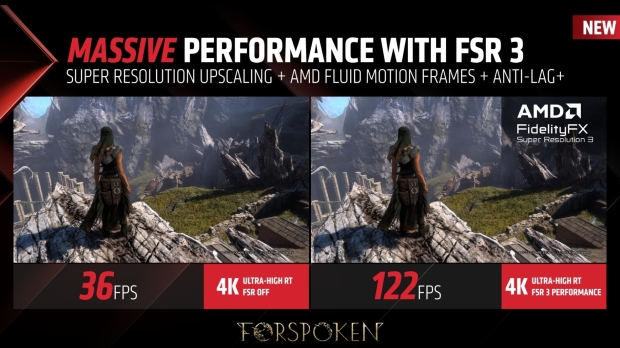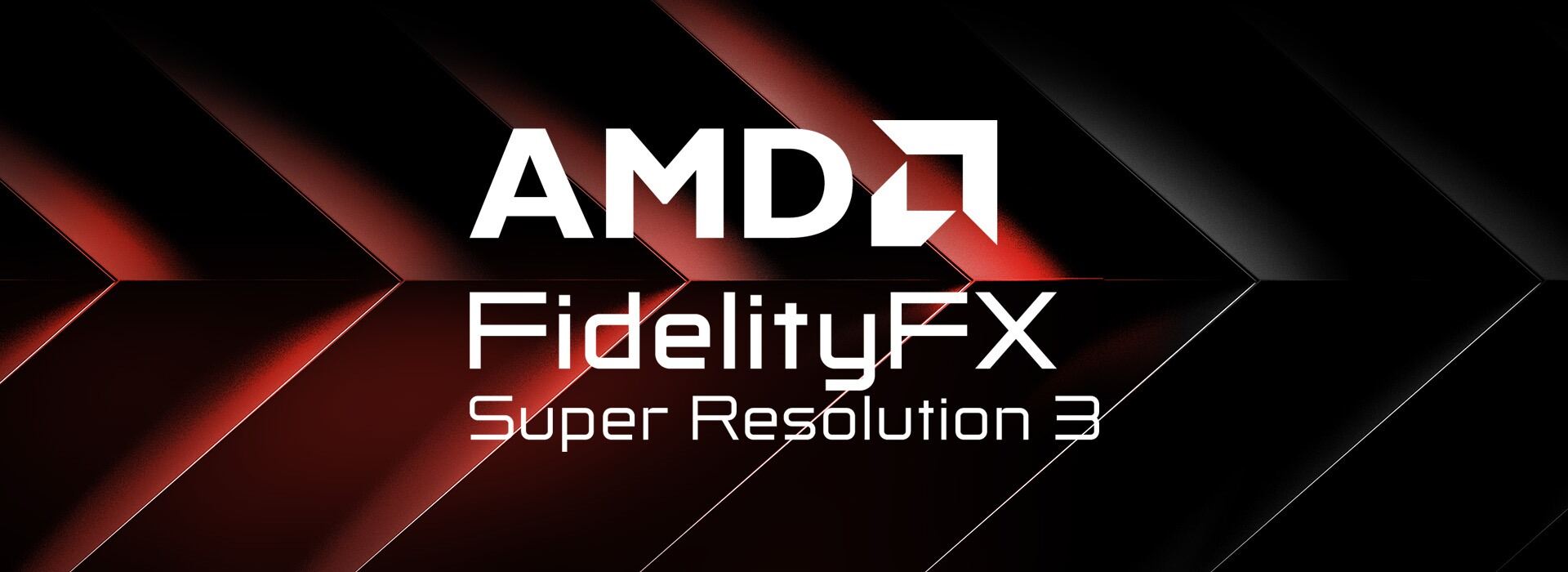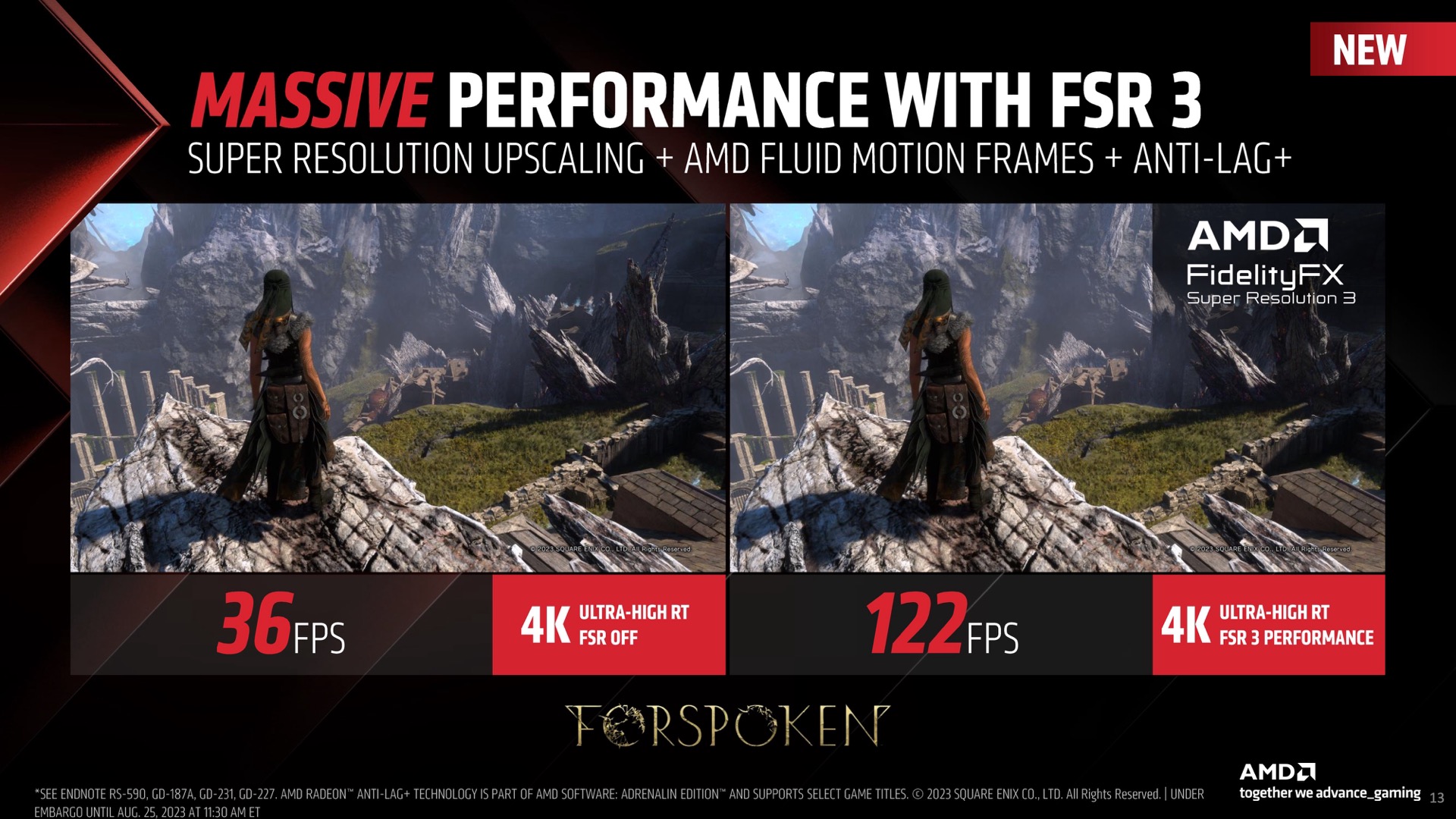AMD FidelityFX Super Resolution 3: Enhancing Gaming Performance with Fluid Motion Frames

AMD Radeon users are in for a treat, especially those using RX 7000-series cards. After showcasing its FidelityFX Super Resolution 3 (FSR 3) technology back in November 2022, AMD is finally ready to release it. FSR 3 is similar to Nvidia’s DLSS 3 upscaling tech, with AMD playing catch-up to ensure their software keeps up with Nvidia’s level of performance. The long-awaited feature will be debuting tomorrow, bringing exciting new possibilities for AMD Radeon users.
Fluid Motion Frames: Enhancing Framerate and Performance

FSR 3’s core addition is the introduction of ‘Fluid Motion Frames.’ This feature generates new frames and inserts them between existing rendered frames, resulting in smoother and improved overall framerates. The addition of Fluid Motion Frames aims to enhance the gaming experience for AMD users.
Release Date Announcement

A firm release date for FSR 3 has remained a mystery until now. However, Frank Azor, Chief Architect of Gaming Solutions and Marketing for AMD, recently confirmed in a tweet that the feature will be available starting tomorrow. He also mentioned that AMD is working with their partners to bring the first two FSR 3 enabled games. More titles will follow in the future, just as we have seen with previous versions of FSR.
Supported Games and Compatibility

While Frank Azor did not specify which games will support FSR 3 at launch, sources suggest that Forspoken and Immortals of Avenum will be among the first titles to feature the technology. FSR 3 will be compatible with Radeon RX 5700/RTX 20 series and newer GPUs. Additionally, AMD plans to make the Fluid Motion Frames feature open-source, allowing for adaptation to other GPU platforms in the future.
Catching Up with Nvidia

AMD’s investment in catching up with Nvidia’s frame-gen technology introduced in DLSS 3 is commendable. FSR 3’s performance in comparison to Nvidia’s offering remains to be seen. It is worth noting that AMD’s Fluid Motion Frames feature does not use AI, unlike DLSS. However, FSR can work with any graphics card because it is open-source, unlike DLSS, which is exclusive to Nvidia GPUs. This opens up the potential for more users to benefit from the frame-gen technology.
Implementation and Potential

FSR 3’s upscaling capabilities will need to be implemented at the developer level. Currently, DLSS supports more games than FSR, primarily due to Nvidia releasing its version of the technology earlier. However, according to PCWorld, the Fluid Motion Frames feature can run at the driver level, potentially making it compatible with most modern games. The launch of FSR 3 tomorrow is highly anticipated, and many are eager to see what AMD has to offer and test out the technology for themselves.
In conclusion, AMD Radeon users have reason to be excited about the upcoming debut of FSR 3. With the introduction of Fluid Motion Frames and its compatibility with various GPUs, AMD aims to enhance the gaming experience for a wide range of users. The release of FSR 3 marks an important step in AMD’s efforts to catch up with Nvidia’s DLSS technology.
More interesting stuff!
Quick Links
Legal Stuff
Social Media
